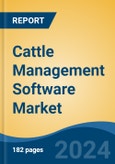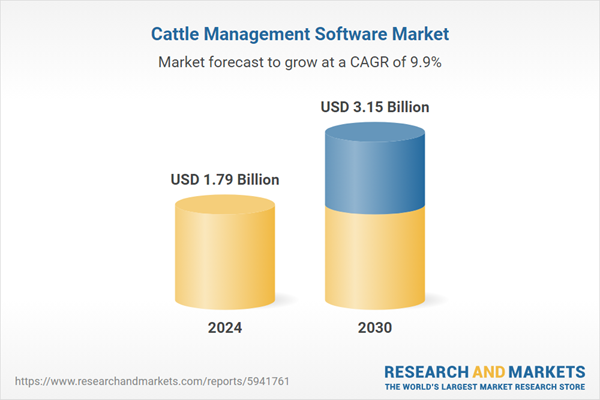Dairy Segment is the fastest growing segment, North America is the largest market globally
Speak directly to the analyst to clarify any post sales queries you may have.
10% Free customizationThis report comes with 10% free customization, enabling you to add data that meets your specific business needs.
Key Market Drivers
The market for global cattle management software is significantly influenced by the integration of advanced technologies such as the Internet of Things, artificial intelligence, and automation. These technologies provide capabilities for real-time monitoring of animal health, precise feeding, and automated record-keeping, which are critical for optimizing farm operations. IoT sensors facilitate continuous data collection on animal location, activity, and vital signs, enabling proactive health interventions.AI algorithms analyze vast datasets from these sensors to predict disease outbreaks or reproductive cycles, allowing farmers to make timely decisions. According to the study 'The Adoption of Agriculture Technology in Small-Scale Farming in The Adumasa Community in Ghana', published in May 2025, the application of agricultural technology increased agricultural productivity by up to 25% compared to conventional methods. The increasing sophistication of these integrated systems enhances the value proposition of cattle management software for modern livestock producers.
Key Market Challenges
The considerable initial investment required for cattle management software implementation and system integration significantly impedes the growth of the Global Cattle Management Software Market. This financial barrier encompasses not only the software licensing costs but also the expenses associated with necessary hardware, IoT devices, and the complex process of integrating new digital solutions with existing farm management systems. For many agricultural operations, particularly small and medium-sized farms, these upfront expenditures represent a substantial financial commitment that can be difficult to absorb.Key Market Trends
The Global Cattle Management Software Market is undergoing significant evolution driven by targeted technological advancements. One prominent trend is the adoption of blockchain for enhanced traceability and data security, addressing the critical need for transparency across the cattle supply chain. This technology provides an immutable ledger for recording transactions and events, from animal birth to processing, ensuring data integrity and mitigating fraud. For example, in May 2023, BeefChain, a blockchain implementation in the cattle industry, successfully completed pilot projects and received certification from the US Department of Agriculture, showcasing its practical application in securing provenance. Such systems bolster consumer trust in product origin and quality, a growing demand within global food markets.Key Market Players Profiled:
- Merck & Co., Inc.
- Afimilk Ltd.
- GEA Group Aktiengesellschaft
- Livestock Improvement Corporation Limited
- Nedap N.V.
- Datamars SA
- Inpixon
- CowManager B.V.
- Cattle Eye Ltd.
- smaXtec animal care GmbH
Report Scope:
In this report, the Global Cattle Management Software Market has been segmented into the following categories:By Sector:
- Dairy
- Meat
By Software Type:
- Monitoring Software
- Milk Harvesting Management
- Reproduction/ Breeding Management
- Feeding Management
- Health Management
- Others
By End User:
- Farm Owners
- Managers/ Operators
- Others
By Region:
- North America
- Europe
- Asia Pacific
- South America
- Middle East & Africa
Competitive Landscape
Company Profiles: Detailed analysis of the major companies present in the Global Cattle Management Software Market.Available Customizations:
With the given market data, the publisher offers customizations according to a company's specific needs. The following customization options are available for the report:- Detailed analysis and profiling of additional market players (up to five).
This product will be delivered within 1-3 business days.
Table of Contents
Companies Mentioned
- Merck & Co., Inc.
- Afimilk Ltd.
- GEA Group Aktiengesellschaft
- Livestock Improvement Corporation Limited
- Nedap N.V.
- Datamars SA
- Inpixon
- CowManager B.V.
- Cattle Eye Ltd.
- smaXtec animal care GmbH
Table Information
| Report Attribute | Details |
|---|---|
| No. of Pages | 180 |
| Published | November 2025 |
| Forecast Period | 2024 - 2030 |
| Estimated Market Value ( USD | $ 1.79 Billion |
| Forecasted Market Value ( USD | $ 3.15 Billion |
| Compound Annual Growth Rate | 9.8% |
| Regions Covered | Global |
| No. of Companies Mentioned | 10 |









